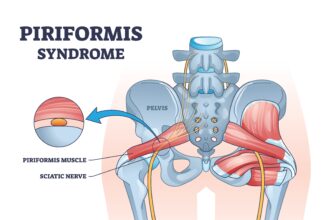Effective pest control in hospitals is more than a matter of comfort, it’s a vital part of protecting vulnerable patients, preventing the spread of dangerous pathogens, and maintaining the trust of both the public and regulatory bodies.
Why Hospital Pest Control Matters for Safety
Hospitals are environments where people’s immune systems are often compromised, so even minor exposure to pathogens can have serious consequences. Pests such as cockroaches, flies, and rodents are more than a source of discomfort, they can spread bacteria, viruses, and fungi that threaten patient recovery. Unlike in commercial or residential spaces, an infestation in a hospital can quickly undermine public trust, cause regulatory violations, and jeopardize accreditation or funding.
A single cockroach on a patient’s food tray could lead to a health department complaint, a lawsuit, or an investigative news story. Regulatory bodies like The Joint Commission and state health departments can issue citations for poor pest management, and even rumors of an infestation may make patients question the hospital’s ability to keep them safe. In this setting, hospital pest control isn’t optional hygiene, it’s a critical part of infection prevention, patient safety, and high-level risk management.
Do Hospitals Have Bed Bugs?
Bed bugs can and do show up in hospitals, though they’re usually less common than cockroaches, ants, or rodents. They don’t spread disease, but their bites can trigger allergic reactions, sleeplessness, and emotional distress, issues no patient should face during recovery. In hospitals, they can also cause secondary harm, such as patients refusing treatment, declining overnight stays, or requesting transfers.
Unlike roaches or mice, bed bugs are uniquely challenging because they often arrive on patients’ or visitors’ belongings, hide in patient rooms or waiting areas, and spread quietly before anyone notices. They’ve been found in waiting room chairs, patient beds, and even EMS stretchers, not just in overnight wards. This hitchhiking habit makes “zero-risk” prevention impossible. While less common than other hospital bugs and posing lower direct health risks, bed bugs can create serious operational headaches, require specialized eradication measures, and cause far greater media and patient-relations fallout than their numbers suggest.
Dangerous Hospital Bugs You Should Know
The top health threats in hospitals usually come from cockroaches, rodents, flies, and ants, especially Pharaoh ants. Cockroaches carry bacteria like Salmonella and E. coli on their bodies and droppings, while rodents can transmit hantavirus and leptospirosis, as well as chew through electrical systems. Flies mechanically spread pathogens from waste to sterile areas, and Pharaoh ants have been linked to hospital-acquired infection agents such as MRSA. While bed bugs often get the spotlight, these pests have a direct, proven link to disease transmission, making them a higher priority for pest control in hospitals.
Beyond these usual suspects, there are hospital-specific offenders that rarely make headlines but can cause serious disruptions. Pharaoh ants are notorious for crawling into IV lines and carrying pathogens into wounds. Drain flies can colonize biofilm in hospital sinks and splash bacteria into the air. Stored-product pests, such as beetles or moths, may contaminate specialized nutritional supplies or sterile packaging. Even without public attention, these hospital bugs can interfere with surgeries, sterilization cycles, or medication preparation, leading to far-reaching operational consequences.
How Hospital Bugs Spread Superbugs
Pests act as living, mobile “delivery systems” for pathogens, picking up microbes from contaminated waste, drains, or biohazard areas and transferring them to surfaces, instruments, and even patients. In hospitals, this danger is amplified when cockroaches and flies carry multidrug-resistant bacteria like MRSA between wards, rodents contaminate sterile supplies with urine and droppings, and ants transport superbugs directly into IV lines or wounds. Because these pathogens are already resistant to antibiotics, stopping their spread depends on cutting off every possible transmission route, including pests.
The real risk isn’t just “spreading germs” but spreading the wrong germs to the wrong place. Flies in a wound care unit can land on infected bandages and then on surgical instruments awaiting sterilization. Cockroaches moving between laundry facilities and patient rooms can transfer resistant bacteria onto clean linens. Rodents in mechanical rooms can contaminate HVAC ducts, sending airborne pathogens into isolation wards. Superbugs like MRSA and CRE don’t need large outbreaks, just a single breach in infection control to gain a foothold, which is why consistent hospital pest control is essential.
How To Do Pest Control In Hospitals?
Pest control for hospitals requires a precision approach, using non-volatile, hospital-safe products in localized treatments to avoid airborne contamination, and relying on Integrated Pest Management (IPM) strategies that prioritize sanitation, structural fixes, and monitoring before chemical solutions. Interventions are often scheduled after hours or in isolated non-patient areas, with housekeeping, maintenance, and infection control teams coordinating closely with pest management staff. The aim is to eliminate pests without introducing chemical hazards or disrupting critical care.
The gold standard is a silent, surgical intervention, vacuum extraction for bed bugs instead of airborne chemicals, single-room containment with portable HEPA filtration during treatments, and gel baits in place of sprays to avoid aerosolizing residues. Treatments are coordinated with the hospital’s infection control officer to align with sterilization cycles and patient movements. While competitors may advertise “safe products,” few emphasize integrating pest control with infection control protocols, and that’s where real trust is built in hospital pest control programs.
Facility Pest Control to Keep Hospitals Pest-Free
Proactive prevention is far cheaper, and safer, than reacting after an infestation. It starts with sealing wall penetrations, floor gaps, and utility entry points; storing food and medical supplies in pest-proof containers; and maintaining strict waste handling schedules, especially for biohazard and food waste. Incoming deliveries should be inspected to catch pests hidden in shipments, while door sweeps, air curtains, and drain covers help block entry. Staff training is key so early signs are recognized and addressed before an outbreak.
An often-overlooked layer is design-based prevention, integrating pest deterrence into the building itself. Pest-proof recessed lighting keeps insects from congregating overhead, sloped shelving in storage prevents dust and pest debris buildup, and sealed waste transport systems move garbage from wards to compactors without exposing it to corridors. Incorporating pest-control checkpoints into construction and renovation projects helps ensure pests don’t enter during building work. This approach shifts the focus from catching pests to designing them out of the environment entirely, and it’s a core part of effective facility pest control strategies.
Pest Control for Hospitals in the Superbug Fight
Superbugs thrive when given easy transmission paths, and pests are one of those often-overlooked routes in infection control plans. Effective hospital pest control reduces cross-contamination by stopping pests from moving pathogens between patients and departments, supports antibiotic stewardship by lowering infection rates and reducing the need for antibiotics, and strengthens outbreak prevention by removing environmental vectors that contribute to hospital-acquired infections. In short, pest control in hospitals isn’t just about cleanliness, it’s a frontline defense in the fight against antimicrobial resistance.
While superbug control is often discussed in terms of hand hygiene, sterilization, and antibiotic use, pest control for hospitals is the environmental vector control piece of the puzzle, much like mosquito control in public health. Removing pests that can physically transport resistant bacteria helps prevent the “horizontal spread” of superbugs between unrelated patients or wards. Facilities with strict pest monitoring often see fewer unexplained cases of resistant infections, proving that cutting off even indirect transmission routes delivers measurable benefits and highlights the value of ongoing facility pest control.








